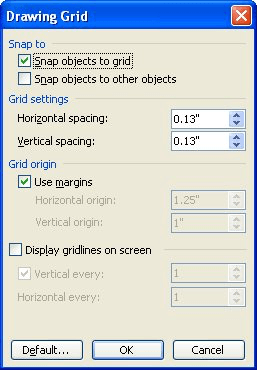Please Note: This article is written for users of the following Microsoft Word versions: 97, 2000, 2002, and 2003. If you are using a later version (Word 2007 or later), this tip may not work for you. For a version of this tip written specifically for later versions of Word, click here: Accurately Setting Tabs Using the Ruler.
Written by Allen Wyatt (last updated February 8, 2025)
This tip applies to Word 97, 2000, 2002, and 2003
You probably know that Word allows you to set tabs in a paragraph by clicking on the Ruler at the top of the document window. The tab that is inserted depends on the tab type selected at the left side of the Ruler. You can then click on the tab and drag it to the location desired.
Sometimes, however, accurately placing the tabs using the Ruler and the mouse can be a pain. In fact, you may notice that the tabs seem to "jump" from one location to another as you are dragging them. If this is the case, and you long for a way to more accurately set the tabs using the mouse on the Ruler, there are a couple of things you can check out.
First, you should understand that the grid settings on the drawing layer can affect the dragging behavior for tabs. (Nobody seems to know why this is the case; it just is.) Word, by default, is configured so that "snap to grid" is turned on, and the grid is set for 1/16-inch increments. Thus, when you drag a tab stop, it seems to "jump" in increments of 1/16 inch. If you don't need the drawing grid, you can turn it off by following these steps:

Figure 1. The Drawing Grid dialog box.
You should now be able to drag tabs along the Ruler smoothly and precisely. If you want to see the precise placement of the tabs, just hold down the Alt key as you drag them.
If you still have problems placing the tabs accurately, you might try increasing the zoom setting for viewing the document, and you should make sure that your mouse is clean. (If your mouse uses a mechanical ball for positioning, and there is lint or dirt in the ball housing, that can affect the ability of the mouse to move smoothly.)
WordTips is your source for cost-effective Microsoft Word training. (Microsoft Word is the most popular word processing software in the world.) This tip (38) applies to Microsoft Word 97, 2000, 2002, and 2003. You can find a version of this tip for the ribbon interface of Word (Word 2007 and later) here: Accurately Setting Tabs Using the Ruler.

Create Custom Apps with VBA! Discover how to extend the capabilities of Office 365 applications with VBA programming. Written in clear terms and understandable language, the book includes systematic tutorials and contains both intermediate and advanced content for experienced VB developers. Designed to be comprehensive, the book addresses not just one Office application, but the entire Office suite. Check out Mastering VBA for Microsoft Office 365 today!
Word offers a variety of tabs that define different ways to align text. If you need to align numeric values, you'll ...
Discover MoreIf you have a constant need to define tabs at the edge of the right margin, you'll love the macro-based technique ...
Discover MoreWant to use tab stops to align text according to the position of a certain character? It's easy to do if that character ...
Discover MoreFREE SERVICE: Get tips like this every week in WordTips, a free productivity newsletter. Enter your address and click "Subscribe."
There are currently no comments for this tip. (Be the first to leave your comment—just use the simple form above!)
Got a version of Word that uses the menu interface (Word 97, Word 2000, Word 2002, or Word 2003)? This site is for you! If you use a later version of Word, visit our WordTips site focusing on the ribbon interface.
Visit the WordTips channel on YouTube
FREE SERVICE: Get tips like this every week in WordTips, a free productivity newsletter. Enter your address and click "Subscribe."
Copyright © 2025 Sharon Parq Associates, Inc.
Comments